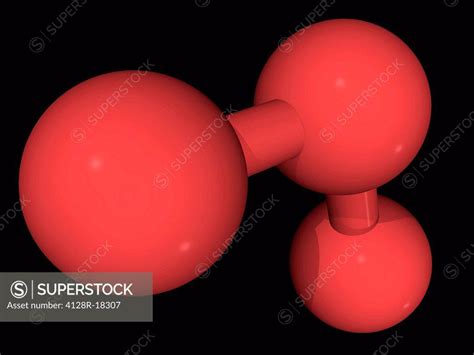
Molar Mass of Ozone: Delving into the Properties and Applications of Triatomic Oxygen
Ozone, a molecule composed of three oxygen atoms (O3), possesses a unique set of properties and practical applications. Understanding its molar mass is crucial for comprehending its behavior and utilizing it effectively.

Molar Mass of Ozone
The molar mass of a substance represents the mass of one mole of that substance. For ozone, the molar mass is determined by summing the atomic masses of its constituent oxygen atoms.
The atomic mass of oxygen is 15.9994 grams per mole (g/mol). Therefore, the molar mass of ozone is:
Molar mass of O3 = 3 x (15.9994 g/mol) = 47.9982 g/mol
Physical and Chemical Properties of Ozone
The molar mass of ozone influences its physical and chemical properties:
Physical Properties:
- Ozone is a pale blue gas at room temperature.
- It has a density of 2.144 g/L at 0°C and 1 atm, denser than air.
- Ozone is highly reactive and readily oxidizes other substances.
Chemical Properties:
- Ozone is a powerful oxidizing agent, liberating oxygen during reactions.
- It can react with a wide range of inorganic and organic compounds, including pollutants and microorganisms.
- Ozone is unstable and can decompose back into oxygen molecules (O2).
Applications of Ozone
The unique properties of ozone make it useful in various applications:
- Water Purification: Ozone is used as a disinfectant in water treatment facilities to eliminate bacteria, viruses, and cysts.
- Air Purification: Ozone can remove odors, pollutants, and allergens from indoor air, improving air quality.
- Medical Applications: Ozone therapy has been investigated for its potential in treating various ailments, including infections and wounds.
- Industrial Applications: Ozone is used in bleaching textiles, deodorizing fabrics, and disinfecting surfaces.
Molar Mass and Practical Considerations
Stoichiometry: The molar mass is essential for determining the stoichiometry of reactions involving ozone. It allows accurate calculation of the amount of reactants and products required or produced.
Solubility: The molar mass can influence the solubility of ozone in different solvents. For instance, ozone is more soluble in water than in air, affecting its distribution in natural environments.
Stability: The molar mass provides insights into the stability of ozone. The relatively high molar mass suggests that ozone is not a stable molecule and tends to decompose into oxygen.
Future Applications and Innovations
The properties of ozone continue to inspire researchers to explore innovative applications:
- Novel Disinfectants: Researchers are developing ozone-based disinfectants with improved efficacy and reduced environmental impact.
- Advanced Air Purification Systems: Ozone-generating devices are being designed for use in air purifiers to enhance air quality in enclosed spaces.
- Biodegradable Plastics: The incorporation of ozone into polymers could create biodegradable plastics that break down naturally over time.
- Medical Advancements: Ozone therapy is being investigated as a potential treatment for chronic diseases and tissue regeneration.
Conclusion
The molar mass of ozone, 47.9982 g/mol, plays a pivotal role in understanding the properties and applications of this triatomic molecule. Ozone’s unique reactivity, coupled with its specific molar mass, enables its use in various fields, including water and air purification, medical treatments, and industrial processes.
As research continues, new and innovative applications of ozone are emerging, expanding its potential to address pressing societal needs, such as environmental sustainability, public health, and advanced materials.
Useful Tables
Table 1: Properties of Ozone
| Property | Value |
|---|---|
| Formula | O3 |
| Molar Mass | 47.9982 g/mol |
| Density (0°C, 1 atm) | 2.144 g/L |
| Solubility in Water (20°C) | 0.13 g/L |
| Solubility in Air (20°C) | 40 mg/m3 |
Table 2: Applications of Ozone
| Application | Purpose |
|---|---|
| Water Purification | Disinfection of bacteria and viruses |
| Air Purification | Removal of odors, pollutants, and allergens |
| Medical Applications | Treatment of wounds, infections, and chronic diseases |
| Industrial Applications | Bleaching textiles, deodorizing fabrics, and disinfecting surfaces |
Table 3: Stoichiometric Importance of Molar Mass
| Reaction | Balanced Equation |
|---|---|
| Ozone formation from oxygen | 3O2 → 2O3 |
| Ozone decomposition into oxygen | 2O3 → 3O2 |
| Ozone reaction with water | O3 + H2O → H2O2 + O2 |
Table 4: Tips and Tricks for Using Ozone
| Tip | Benefit |
|---|---|
| Use ozone generators in well-ventilated areas | Prevents ozone accumulation and potential respiratory irritation |
| Monitor ozone concentration | Ensures optimal disinfection without excessive exposure |
| Store ozone-containing materials in airtight containers | Prevents ozone loss and maintains concentration |
| Consider ozone-resistant materials | Prolongs the lifespan of equipment exposed to ozone |
| Explore emerging ozone applications | Stay informed about advancements in ozone technology and potential novel uses |










